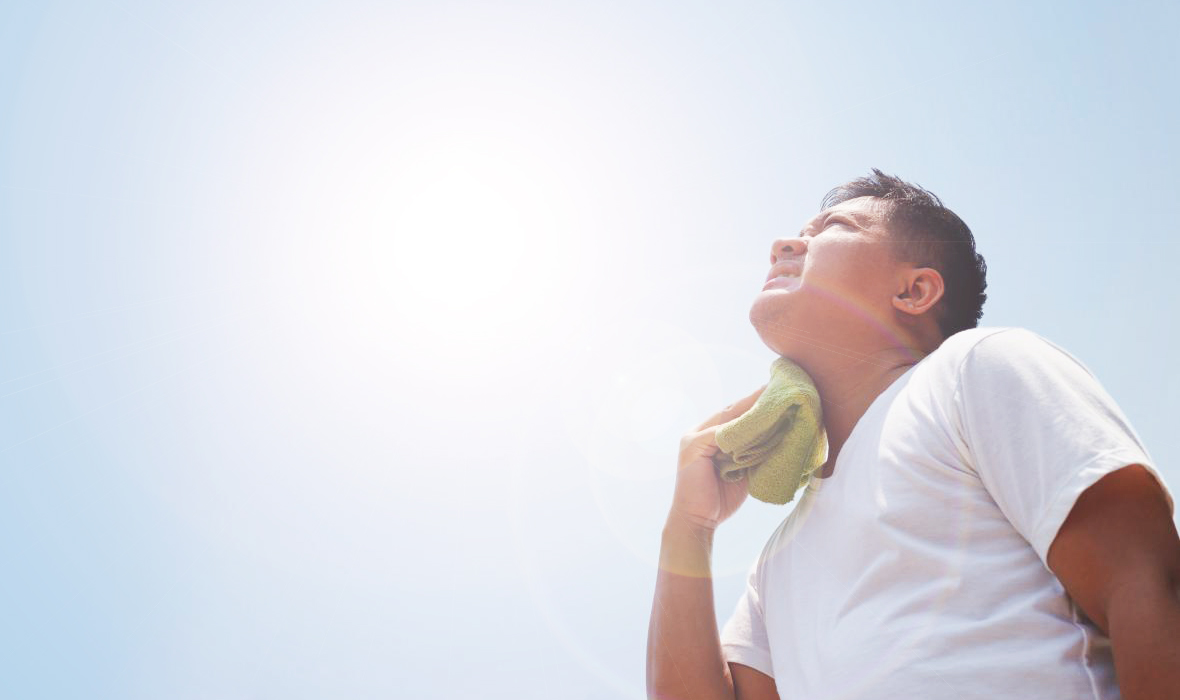Heat stroke and sky-high temperatures seem to be on everyone’s mind these days, and there’s no denying that the Matagorda County summer heat is a force to be reckoned with. Here is some great information we compiled from the Centers for Disease Control and Prevention and Johns Hopkins Medicine that may help you prevent, recognize, and respond to complications from over-exposure to the unforgiving Texas sun.
What are heat-related illnesses?
Exposure to abnormal or prolonged amounts of heat and humidity without relief or adequate fluid intake can cause various types of heat-related illness. Children and teens adjust more slowly than adults do to changes in environmental heat. They also produce more heat with activity than adults, and sweat less. Sweating is one of the body’s normal cooling mechanisms. Children and teens often do not think to rest when having fun and may not drink enough fluids when playing, exercising, or participating in sports.
Children and teens with chronic health problems, or those who take certain medicines, may be more susceptible to heat-related illnesses. Children and teens who are overweight or wear heavy clothing during exertion, such as marching band or football uniforms, are also more susceptible.
Heat cramps
Heat cramps are the mildest form of heat illness and consist of painful muscle cramps and spasms that occur during or after intense exercise and sweating in high heat.
What to look for:
- Heavy sweating during intense exercise
- Muscle pain or spasms
What to do:
- Stop physical activity and move to a cool place
- Drink water or a sports drink
- Wait for cramps to go away before you do any more physical activity
Get medical help right away if:
- Cramps last longer than 1 hour
- You’re on a low-sodium diet
- You have heart problems
Heat exhaustion
Heat exhaustion is more severe than heat cramps and results from a loss of water and salt in the body. It occurs in conditions of extreme heat and excessive sweating without adequate fluid and salt replacement. Heat exhaustion occurs when the body is unable to cool itself properly and, if left untreated, can progress to heat stroke.
What to look for:
- Heavy sweating
- Cold, pale, and clammy skin
- Fast, weak pulse
- Nausea or vomiting
- Muscle cramps
- Tiredness or weakness
- Dizziness
- Headache
- Fainting (passing out)
What to do:
- Move to a cool place
- Loosen your clothes
- Put cool, wet cloths on your body or take a cool bath
- Sip water
Get medical help right away if:
- You are throwing up
- Your symptoms get worse
- Your symptoms last longer than 1 hour
Heat stroke
Heat stroke, the most severe form of heat illness, occurs when the body’s heat-regulating system is overwhelmed by excessive heat. It is a life-threatening emergency and requires immediate medical attention.
What to look for:
- High body temperature (103°F or higher)
- Hot, red, dry, or damp skin
- Fast, strong pulse
- Headache
- Dizziness
- Nausea
- Confusion
- Losing consciousness (passing out)
What to do:
- Call 911 right away because heat stroke is a medical emergency
- Move the person to a cooler place
- Help lower the person’s temperature with cool cloths or a cool bath
- Do not give the person anything to drink
Sunburn
Sunburn is an often painful sign of skin damage from spending too much time outdoors without wearing a protective sunscreen. Years of overexposure to the sun lead to premature wrinkling, aging of the skin, age spots, and an increased risk of skin cancer. In addition to the skin, eyes can get burned from sun exposure. Sunburned eyes become red, dry, and painful, and feel gritty. (more)
What to look for:
- Painful, red, and warm skin
- Blisters on the skin
What to do:
- Stay out of the sun until your sunburn heals
- Put cool cloths on sunburned areas or take a cool bath
- Put moisturizing lotion on sunburned areas
- Do not break blisters
Heat Rash
Red clusters of small blisters that look like pimples on the skin (usually on the neck, chest, groin, or in elbow creases).
What to look for:
- Red clusters of small blisters that look like pimples on the skin (usually on the neck, chest, groin, or in elbow creases)
What to do:
- Stay in a cool, dry place
- Keep the rash dry
- Use powder (like baby powder) to soothe the rash
Stay safe!
It’s important to stay safe, be aware, hydrate, and take care of each other. When in doubt, always seek medical attention right away. Your 24-Hour MRMC Emergency Department is standing by to assist with emergency situations.










